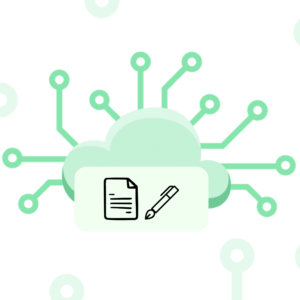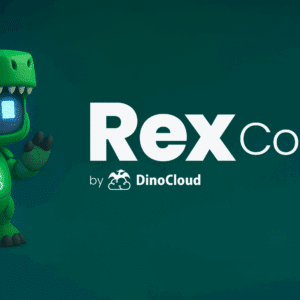
Did you know that there will be an estimated 31 billion connected devices worldwide by 2025? With the rapid growth of the Internet of Things (IoT), ensuring secure device connectivity has become paramount. In this article, we will delve into the world of IoT on AWS and explore how it enhances device connectivity and security.
IoT on AWS leverages the power of AWS IoT Core to enable seamless communication between devices and the AWS Cloud. By implementing robust authentication and authorization mechanisms, such as certificates, policies, and protocols, AWS ensures that only trusted and authorized devices can connect to the IoT ecosystem.
Furthermore, AWS prioritizes data protection in transit by utilizing secure protocols like TLS and MQTT over WSS. This ensures that sensitive information remains encrypted and inaccessible to unauthorized entities.
Configuring device endpoints is another crucial step in establishing secure connectivity. Each AWS account has unique and account-specific device endpoints, adding an additional layer of security to the IoT ecosystem.
Join us as we unlock the key features of IoT on AWS, discuss best practices for architecting a secure IoT environment, and explore advanced integration and management techniques. By the end of this article, you will have a comprehensive understanding of how to harness the power of IoT on AWS for your own business solutions.
Key Takeaways:
- AWS IoT Core enables secure device connectivity in IoT applications on the AWS Cloud.
- Authentication and authorization mechanisms like certificates, policies, and protocols ensure only trusted devices can connect to the IoT ecosystem.
- Data protection in transit is ensured through TLS and MQTT over WSS protocols, keeping sensitive information encrypted and secure.
- Unique and account-specific device endpoints enhance the security of IoT on AWS.
- By implementing best practices and leveraging advanced integration techniques, you can maximize the efficiency and automation of IoT devices on AWS.
Understanding IoT in AWS Cloud: Security and Connectivity
In this section, we will gain a comprehensive understanding of IoT in the AWS Cloud, with a focus on security and connectivity. We will explore the pivotal role played by AWS IoT Core in facilitating device communication and ensuring seamless connectivity between devices and the AWS ecosystem.
The Role of AWS IoT Core in Device Communication
AWS IoT Core is a powerful service that forms the backbone of device communication in the AWS Cloud. It provides a secure and scalable platform for connecting, managing, and communicating with IoT devices. With AWS IoT Core, you can easily establish bi-directional communication channels between devices and the cloud, enabling real-time data exchange and remote control.
Authentication and Authorization: Certificates, Policies, and Protocols
Ensuring the authenticity and integrity of device communication is paramount in IoT security. AWS IoT Core offers robust authentication and authorization mechanisms to verify the identity of devices and control their access to resources. This is achieved through the use of certificates, policies, and protocols.
– Certificates: AWS IoT Core uses X.509 certificates to securely authenticate devices and establish trust between them and the cloud. Each device is provisioned with a unique certificate, ensuring secure device authentication.
– Policies: AWS IoT Core employs policies to define the permissions and access rights of devices. These policies can be configured to allow or deny certain actions, ensuring granular control over device interactions within the IoT ecosystem.
– Protocols: AWS IoT Core supports various protocols, including MQTT, HTTP, and WebSockets, for device communication. These protocols ensure secure and efficient data transmission, while also providing the flexibility to choose the most suitable option for your IoT applications.
Data Protection in Transit: TLS and MQTT Over WSS
Data protection during transmission is essential for maintaining the security and confidentiality of IoT applications. AWS IoT Core incorporates industry-standard security measures to safeguard data in transit.
– TLS (Transport Layer Security): AWS IoT Core utilizes TLS, a cryptographic protocol, to establish secure connections between devices and the cloud. TLS encrypts the data exchanged between devices and ensures its integrity, mitigating the risk of unauthorized access or tampering.
– MQTT Over WSS (WebSockets Secure): MQTT (Message Queuing Telemetry Transport) is a lightweight protocol widely used in IoT applications. AWS IoT Core allows MQTT communication over WSS, which is MQTT over WebSockets secured with TLS. This combination provides a secure and reliable communication channel for IoT devices.
Device Endpoints: Unique Account-Specific Configuration
Device endpoints play a crucial role in establishing secure connections between devices and the AWS Cloud. AWS IoT Core assigns unique and account-specific endpoints for each AWS account, ensuring secure and reliable communication channels for devices.
These endpoints serve as the entry points for devices to connect to AWS IoT Core securely. The unique configuration of device endpoints offers an additional layer of security, preventing unauthorized access and ensuring data privacy.
In summary, AWS IoT Core is the key component in IoT device communication within the AWS Cloud. It provides robust authentication and authorization mechanisms, ensures data protection in transit, and offers a unique and secure configuration for device endpoints. With AWS IoT Core, you can build secure and resilient IoT solutions that enable seamless connectivity and enhance the overall security of your IoT ecosystem.
As we delve into the architecture of IoT on AWS, it’s important to recognize the role of serverless computing in enhancing the efficiency and scalability of IoT applications. Serverless architectures eliminate the need for you to manage servers, thereby simplifying the deployment and management of IoT applications. For a deeper understanding of how serverless architecture can propel your IoT solutions forward, consider reading about the benefits of serverless architecture on AWS.
Key Features of IoT on AWS
In this section, we will explore the key features of IoT on AWS that make it a powerful platform for IoT applications. AWS offers a range of capabilities through its IoT Core service, enabling seamless device management, rule-based actions, and secure communication.
AWS IoT Core Device Management:
- Seamless Monitoring: AWS IoT Core provides real-time monitoring of IoT devices, allowing you to track their status, performance, and health.
- Efficient Control: With AWS IoT Core, you can remotely control your devices, enabling actions such as firmware updates, configuration changes, and device resets.
Rule-Based Actions:
- Automation: AWS IoT Core enables the automation of processes by allowing you to define rules based on real-time data from your devices. These rules trigger specific actions, saving time and effort.
- Efficient Decision-Making: By leveraging rule-based actions, you can make efficient and informed decisions based on the insights gathered from your IoT devices. This enables effective response and optimization of your business operations.
Secure Communication:
- End-to-End Encryption: AWS IoT Core ensures secure communication between your IoT devices and the AWS Cloud through end-to-end encryption, protecting data from unauthorized access.
- Secure Protocols: AWS IoT Core supports secure communication protocols such as MQTT over TLS and MQTT over WebSockets, ensuring secure data transmission between devices and the cloud.
Architecting for Security: Best Practices in IoT on AWS
When it comes to IoT applications, security is paramount. In this section, we will discuss the best practices for architecting a secure IoT environment on AWS. By implementing these practices, you can ensure the safety and integrity of your IoT devices and data.
Securing Device Connections: Mutual Authentication and Encryption
One of the fundamental steps in IoT security is securing device connections. To accomplish this, it is crucial to implement mutual authentication and encryption. Mutual authentication ensures that only trusted devices can connect to the AWS IoT ecosystem, preventing unauthorized access and potential breaches.
Device authentication involves the exchange of credentials between the device and the cloud, verifying the identity of both parties. This authentication process eliminates the risk of unauthorized devices gaining access to the IoT network. Encryption, on the other hand, protects the confidentiality and integrity of data transmitted between devices and the cloud. By encrypting the data, you prevent eavesdropping and ensure data privacy.
Managing Device Credentials and Permissions
Effective management of device credentials is essential for maintaining the security of IoT systems. Each device should have unique and securely stored credentials, such as certificates or keys, that are used for authentication during the connection process. By safeguarding these credentials, you can prevent unauthorized access to your IoT network.
In addition to managing device credentials, it is crucial to control device permissions. Assigning appropriate permissions to devices ensures that they can only access the resources and perform the actions they are authorized to. Fine-grained access control allows you to restrict device capabilities, minimizing potential vulnerabilities and limiting the impact of a security breach.
Implementing AWS IoT Core Policies for Enhanced Security
AWS IoT Core provides a powerful tool for enhancing security through the implementation of policies. AWS IoT Core policies allow you to define rules and permissions for device access and actions within the IoT environment. These policies enable you to enforce strict security measures and ensure that devices operate within predefined boundaries.
By leveraging AWS IoT Core policies, you can control device connectivity, data interactions, and resource access. These policies define the level of access and the actions devices are allowed to perform, further enhancing the security of your IoT infrastructure.
| Best Practices for IoT Security on AWS |
|---|
| Implement mutual authentication to ensure trusted device connections |
| Encrypt data transmitted between devices and the cloud |
| Manage device credentials securely |
| Control device permissions to restrict access |
| Implement AWS IoT Core policies for granular security control |
Advanced Integration and Management of IoT Devices
In this section, we will explore advanced techniques for integrating and managing IoT devices on AWS. We will delve into the role of MQTT message broker and its significance in enabling efficient and secure transmission of data between devices and applications. Additionally, we will discuss the concept of device state management using AWS IoT Device Shadows and how it enables real-time synchronization and interaction with devices, even when they are offline. Finally, we will explore message rules and processing mechanisms that maximize efficiency in data handling and automation within the IoT ecosystem.
Devices and Applications: MQTT Message Broker and Secure Transmission
In IoT device integration, the role of MQTT message broker is crucial. MQTT (Message Queuing Telemetry Transport) is a lightweight publish-subscribe messaging protocol widely used in IoT applications. It facilitates efficient and secure transmission of data between devices and applications, ensuring reliable communication and minimizing bandwidth usage.
With the MQTT message broker, devices can publish data to a specific topic or subscribe to topics of interest to receive relevant information. This provides a scalable and flexible approach to data exchange, enabling seamless communication in IoT systems.
Additionally, MQTT supports secure transmission through the use of Transport Layer Security (TLS) encryption, ensuring the confidentiality and integrity of data during transit. This makes MQTT a suitable choice for IoT applications where data security is critical.
State Management: Device Shadows in AWS IoT
Device state management is a vital aspect of IoT device integration, especially when dealing with intermittent connectivity or offline devices. AWS IoT Device Shadows provide a powerful solution for managing and synchronizing the state of devices in real-time, regardless of their online status.
Device Shadows act as virtual representations of physical devices, storing and maintaining the desired and reported state of the device. This allows applications to interact with the device and retrieve its latest state, even when the device is offline. When the device comes back online, it automatically synchronizes with its shadow, ensuring consistency throughout the IoT ecosystem.
This state synchronization capability enables seamless interactions and seamless user experiences, as applications can always access the latest information about a device, regardless of its online status. Device Shadows bring enhanced reliability and resilience to IoT systems, ensuring data consistency and reducing operational complexities.
Maximizing Efficiency: Message Rules and Processing
In IoT deployments, efficient processing and automation of data are crucial for timely decision-making and effective operations. AWS IoT provides message rules and processing mechanisms that enable efficient data handling and automation within the IoT ecosystem.
Message rules allow users to define conditions and actions based on incoming data, triggering responses or forwarding data to other services for further processing. This enables automated workflows and real-time actions based on the content of the messages, streamlining operations and reducing manual intervention.
Furthermore, AWS IoT offers various processing options, such as AWS Lambda, to perform complex data transformations, analytics, and integration with other AWS services. This allows users to extract valuable insights from the IoT data, implement business logic, and orchestrate processes efficiently.
By leveraging message rules and efficient data processing mechanisms, IoT deployments can optimize resource utilization, streamline operations, and enable proactive decision-making based on real-time data.
Conclusion
In conclusion, this article has provided an in-depth exploration of IoT on AWS, focusing on device connectivity and security. By utilizing the powerful features offered by AWS IoT Core, you can ensure secure communication between devices and the AWS Cloud, establishing a robust and reliable IoT ecosystem.
We have delved into the authentication and authorization mechanisms, such as certificates, policies, and protocols, that play a crucial role in ensuring the integrity and trustworthiness of device connections. Additionally, data protection in transit has been addressed through the use of TLS and MQTT over WSS protocols, safeguarding the confidentiality and integrity of your IoT data.
Moreover, we have discussed the configuration of device endpoints, which are unique to each AWS account. This enables you to establish secure and account-specific connectivity for your devices, enhancing the overall security of your IoT deployment.
Furthermore, we have highlighted the key features offered by AWS for IoT applications, including device management, rule-based actions, and secure communication. By leveraging these features, you can streamline your IoT operations, automate processes, and make informed decisions based on real-time data.
With this comprehensive understanding of IoT on AWS, you are well-equipped to embark on your IoT journey and leverage the power of this robust platform for your business solutions. Secure device connectivity and efficient management await you on AWS IoT.
Security remains a top priority in the IoT domain, with AWS providing multiple layers of security features to protect your IoT ecosystem. From device authentication to data encryption, AWS ensures your IoT applications are secure from end to end. For organizations looking to bolster their IoT security posture further, understanding common security pitfalls and how to avoid them is crucial. Dive into Remedies for Common AWS Cloud Security Misconfigurations for insights into securing your AWS environment, an essential read for anyone deploying IoT solutions on AWS.
FAQ
What is IoT on AWS?
IoT on AWS refers to the integration of Internet of Things (IoT) devices with Amazon Web Services (AWS) to enable seamless connectivity, secure communication, and efficient management of IoT applications.
How does AWS IoT Core facilitate device communication?
AWS IoT Core acts as a central hub for device communication by providing secure MQTT and HTTP connections, allowing devices to send and receive data to and from the AWS Cloud.
What are the authentication and authorization mechanisms used in AWS IoT?
AWS IoT utilizes certificates, policies, and protocols for authentication and authorization. Certificates ensure the identity of devices, policies control device permissions, and protocols dictate the secure communication between devices and the AWS Cloud.
How does AWS ensure data protection in transit?
AWS ensures data protection in transit by using Transport Layer Security (TLS) and MQTT over WebSockets (WSS) protocols, which encrypt the data exchanged between devices and the AWS Cloud, safeguarding it from unauthorized access.
What is the significance of device endpoints in AWS IoT?
Device endpoints are unique to each AWS account and provide secure connectivity for IoT devices. They enable devices to securely connect to AWS IoT Core and communicate with other AWS services and applications within the account.
LinkedIn: https://www.linkedin.com/company/dinocloud
Twitter: https://twitter.com/dinocloud_
Instagram: @dinocloud_
Youtube: https://www.youtube.com/c/DinoCloudConsulting







